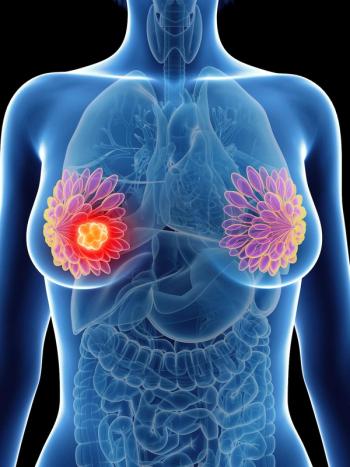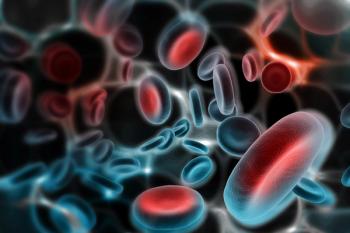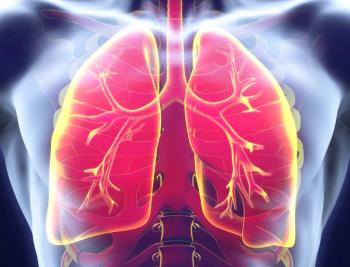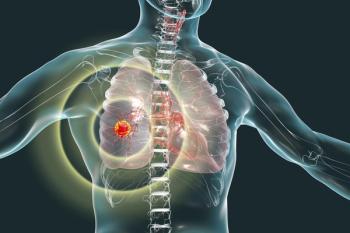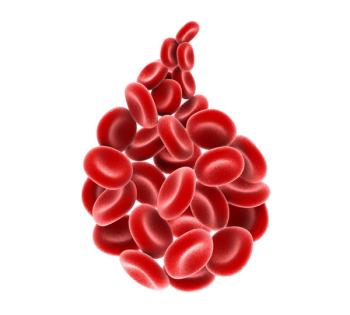
JNJ-79635322 Shows Safety/Favorable Responses in R/R Multiple Myeloma
The 1-year progression-free survival rate for patients in the BCMA/GPRC5D naïve RP2D group was 95.0% and across all dose levels it was 74.1%.
At the recommended phase 2 dose (RP2D), JNJ-79635322 (JNJ-5322), a novel trispecific antibody, demonstrated a manageable safety profile and responses comparable to chimeric antigen receptor (CAR) T-cell therapy in patients with relapsed/refractory multiple myeloma, according to initial phase 1 trial (NCT05652335) data presented at the
In the first-in-human trial, investigators defined the RP2D as 100 mg every 4 weeks subcutaneously with 1 step-up dose of 5 mg of JNJ-5322 2 to 8 days before the first full dose. At this dose, JNJ-5322 had improved or similar adverse events (AEs) to other GPRC5D therapies. In patients naïve to B-cell maturation antigen (BCMA)- and GPRC5D-targeted therapies given the RP2D (n = 27), the overall response rate (ORR) was 100%, complete response (CR) or better rate was 70.4%, and very good partial response (VGPR) or better rate was 96.3%.
“JNJ-5322 binds more efficiently to myeloma cells that express both targets compared to bispecific antibodies… and this translates into higher potency in preclinical studies,” Niels W. van de Donk, MD, PhD, of Amsterdam University Medical Center, Vrije Universiteit Amsterdam, Department of Hematology, said in his presentation. “Importantly, JNJ-5322 also eliminates tumor cells with only BCMA expression or only GPRC5D expression. This is very relevant because myeloma is a very heterogeneous disease when it comes to antigen expression, and it's also very important in order to prevent antigen escape.”
Additionally, the novel CD3 binding domain contributes to a manageable cytokine release syndrome (CRS) profile with only 1 step-up dose.
This study was designed with a dose escalation and dose optimization to identify the RP2D, as well as different administration schedules, and enrolled 147 patients. The primary objectives were to identify the RP2D, safety, including dose-limiting toxicities (DLTs), and a preliminary efficacy assessment. The RP2D was determined based on safety, pharmacokinetic, and efficacy end points, however the maximum tolerated dose was not reached.
The key eligibility criteria were that patients needed to have relapsed/refractory multiple myeloma and be triple-class exposed to a proteasome inhibitor, immunomodulatory drug, and a CD38-based therapy. Patients also needed an ECOG performance status of 0 or 1 and measurable disease.
Of the 147 patients enrolled, 36 patients were treated with the RP2D. For the total population, there was a 9.3-month median follow-up, and for those receiving the RP2D, there was an 11.6-month median follow-up. In the RP2D group, 9 (25%) were previously exposed to a BCMA- or GPRC5D-targeted therapy and 27 (75%) were BCMA/GPRC5D naïve. There were 19 patients (52.8%) whose disease is refractory to a proteasome inhibitor and 100% were refractory to an immunomodulatory drug and a CD38-based therapy. Two patients had penta-drug refractory disease.
The most common hematologic treatment-emergent AEs (TEAEs) for all patients and patients receiving RP2D were lymphocytopenia and neutropenia. van de Donk noted that thrombocytopenia and anemia were rare. The most common nonhematologic TEAEs were infections at 80.6% for any grade and 33.3% grade 3/4 infections in the RP2D group. In this population, there was 1 DLT of neutropenia and 1 grade 5 TEAE of pneumonia.
There were 4 DLTs and grade 5 TEAEs each among the other doses on the trial: the DLTs were maculopapular rash, palmar-plantar erythrodysesthesia syndrome, pneumonia, and respiratory failure; the grade 5 TEAEs were drug-related adenoviral encephalitis, embolic stroke, multiple organ dysfunction syndrome, and pulmonary hemorrhage.
“Twenty-six patients were treated with 100 mg of JNJ-5322 without prophylactic tocilizumab [Actemra]. In this patient population, the frequency of CRS was 69% with the majority of the cases being grade 1, with only few grade 2 cases, and 0 grade 3 or higher CRS events. In the cohort of patients that received prophylactic tocilizumab, we see a substantial reduction in CRS risk to only 20% and these cases were all grade 1. All patients recovered from CRS with the appropriate supportive care measures,” van de Donk explained.
Overall, prophylactic tocilizumab decreased CRS incidence and severity for these patients. In the RP2D group, no patients experienced immune effector cell-associated neurotoxicity syndrome.
Infections, which were the most common TEAE, included grade 3/4 pneumonia in 11.1% of patients given the RP2D, and upper respiratory tract infection and urinary tract infection both in 2.8%. Hypogammaglobulinemia was seen in 50.0% of the RP2D group, which was a contributing factor in the infections, and 47.2% of those patients received 1 or more doses of IVIG supplementation. Two patients died due to infections in the setting of hypogammaglobulinemia.
The most common oral TEAE related to GPRC5D was taste-related events at 58.3% any grade in the RP2D group. Less frequent oral TEAEs included dry mouth, dysphagia, stomatitis, and decreased appetite. “It's important to mention that the frequency and also the severity of these oral AEs is lower than what is typically seen with talquetamab [Talvey], and also the duration of the taste abnormalities is, in my experience, shorter than what you see with talquetamab,” van de Donk said.
Of the RP2D patients, 6% had grade 1/2 weight loss and 12% in the total population experienced grade 1/2 weight loss. There were no grade 3 or higher events of this type.
In the patients previously exposed to BCMA/GPRC5D who received 50 to 300 mg of JNJ-5322 (n = 20), the ORR was 55.0% and the stringent CR rate and the CR rate were both 15.0%. In the BCMA/GPRC5D naïve groups, those who received JNJ-5322 at 50 mg (n = 21) had a 66.7% ORR, and the RP2D and 300 mg (n = 8) groups had 100% ORR. This RP2D group had a stringent CR rate of 55.6%, CR rate of 14.8%, VGPR rate of 25.9%, and partial response rate of 3.7%.
The progression-free survival rate at 1 year in the BCMA/GPRC5D naïve RP2D group was 95.0% and across all dose levels it was 74.1%. In the naïve RP2D group, there was 1 discontinuation in which a patient died of pneumonia with a VGPR, but there have been no patients with progression or other discontinuations in this group to date.
“In conclusion, JNJ-5322 demonstrated a manageable safety profile and an ORR comparable to CAR T with convenient off-the-shelf every-4-weeks dosing with 1 step-up dose to facilitate outpatient dosing,” van de Donk said.
Reference
van de Donk NW, Vega G, Perrot A, et al. First-in-human study of JNJ-79635322 (JNJ-5322), a novel, next-generation trispecific antibody (TsAb), in patients (pts) with relapsed/refractory multiple myeloma (RRMM): Initial phase 1 results. J Clin Oncol. 2025;43(suppl 16):7505. doi:10.1200/JCO.2025.43.16_suppl.7505
Newsletter
Stay up to date on recent advances in the multidisciplinary approach to cancer.


